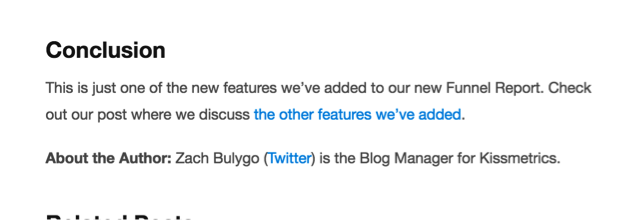
Content marketers: there is a significant amount of untapped potential out there, just waiting for you to grab it.
I’m not talking about SEO, paid ads, or something even more elaborate.
I’m here today to share about an amazing strategy called guest blogging.
Back in the day, guest posts might have meant slapping your name on a quickly written article and publishing it somewhere on the web. Today, guest blogs are a major pathway to online success, fame, and reputation, if done well. With the right platform choice, they can be a serious opportunity to take your name and business to the next level.
Here’s Why Guest Blogging Rocks Today
Here are a few examples of why guest blogging holds a ton of potential and is a serious tool in your online content marketing arsenal.
First, Neil Patel publishes an average of 100 guest posts each year. As one of the leading content marketers online, you know it is something to consider if he’s posting a few a month. Patel has pointed out that you don’t need a ton of conversions to make money off your guest post. In fact, he averages $ 1,000 from each conversion and only gets a few per year.
And, in a recent hot topic on Inbound.org, it was proven that you can’t put a (low) price tag on guest blogging exposure. Mark Traphagen said it best in a comment on the Inbound.org thread, where he mentions how his partner Eric Enge from Stone Temple Consulting built an entire online reputation by writing “authoritative guest posts for highly trusted blogs.” Doing so is what gained Stone Temple its traction and clientele. Guest blogging is huge, if you do it right. (I’ll show you in a moment how much it’s boosted my own brand.)
Let’s take a deeper look at guest blogging and analyze what you need to do to succeed at it.
Why Guest Posts Got a Bad Rap, and How to Not Let That Scare You
Back in the day, Matt Cutts said guest posts were the decay of SEO. He even went on to say that anyone using guest posting as an SEO method was abusing the search engine system. While this was somewhat true, he was focusing in on those that used the mantra of quantity over quality.
Today, guest blogging is no longer about quantity.
Instead, it is all about quality. Write something viral-worthy, inspirational, and show off your knowledge on someone else’s site.
Sites aren’t just accepting guest blogs from anyone. You have to pitch your idea and pitch yourself. If they aren’t interested in what you have to offer, they’ll exclude you.
And, you can guarantee the bigger sites that offer more exposure won’t come within ten feet of your blog if it has grammatical errors or looks like some spun article stolen from the web.
Quality is the key to success in guest blogging: otherwise, you’ll fall in the group Matt Cutts was describing.
How I Use Guest Blogging for My Brand Success
Guest blogging is extremely powerful.
At Express Writers, I’ve utilized guest blogging to help us gain a large chunk of our organic traffic. We don’t pay for advertisements or pay to get our rankings sponsored. Instead, we provide quality content on our site and through other sites to boost our authority in the industry. Our five-year-old company outranks major competitors by 5% on average, and we’ve already climbed to more than 4,100 keyword rankings with Google.
We didn’t spend a dime achieving it. (Just time, blood, sweat, and tears.)
On other sites, right now, I average 10 to 12 guest posts per month. I don’t focus on quantity when I guest post. Instead, I focus on well-written posts on high-value websites that help establish authority. This includes Search Engine Journal, Huffington Post, Content Marketing Institute, SiteProNews, and Business.com.
The entire purpose of doing this is so that we get exposure for our company. Just like Neil Patel said, it only takes one conversion to create a big sale — and a long-term client.
From just one blog on SiteProNews, I gained a $ 5,000 client. Here’s the crazy part: the sales funnel was mind-blowingly short on that four-figure sale: literally, five days after walking in our contact form. Think about that for a second.
Created by Express Writers
Guest blogging works–there’s no doubt about it. And it can return 10, 20, or 100x on your initial investment.
Now that you see the potential power that you can harness in guest blogging, we need to discuss how to do it right.
How to Guest Blog Part 1: Finding the Right Guest Blog Platforms & Approaching Them
Fact: You cannot just churn out a post and send it off to any site.
Instead, you need to know how to amplify your brand and ensure those websites will let you pitch and post in the future.
Let’s discuss.
1. Look for The Most Relevant Guest Blogging Opportunities
While you want to blog and get your name out there, you also want to associate your brand with the right website.
Kissmetrics recommends looking for websites that fit the right criteria, including:
- Similar to your niche
- An audience that would be interested in your product/service
- A blog owner who is highly active on social media
- A blog that has engaged readers with long-term relationships
I also recommend looking for a blog that has a high domain authority and is considered an industry leader. After all, you don’t want to be associated with poor quality websites – that won’t do anything for your brand’s authority or SEO.
I also recommend searching to see what industry leaders are doing. For example, you can do a quick search for “guest posts by Neil Patel.”
See where he is posting. This will help you know where to aim your guest posting goals for and who to pitch to next.
Lastly, never, ever approach a site to guest blog—no matter how cool they look—if they don’t have bios published on the author articles. You want a clear bio, with a headshot, and a link back to your site. Example from SiteProNews.

Not only do they credit me at the top of my article, but with a headshot and multiple links in a bio at the bottom:

Example of the bad: I love your content, Kissmetrics, but the reason I stopped blogging with you was because the author bio and credit just doesn’t show—at all—on your blog.
Check it out, example of a recent blog post:

Who is it by? Oh, there—way, way at the bottom.

For some, that might work, but for me, I’m betting 90% of the readers don’t even get that far. It’s not worth it to put my content on a site that doesn’t attribute clearly, and right away.
If the site doesn’t show the author credit clearly on each article, or if the author is just titled “Guest”, run.
2. How to Craft the Perfect Pitch & Where to Send It
Do not just send a generic email with your title idea. To get noticed (and to get published), you need to craft the perfect pitch.
The first thing you should do is review the website’s content and blogs. Consider the guest posts that they have published in the past to see what they typically accept. Also, review their biggest or most popular articles.
If the content on that site doesn’t align with your ideal online customer, then it’s not the site you should be posting on in the first place. It’s all about the right platforms here. You want one with a huge audience, sure, but also one that has readers who align with your target demographics.
Think of the Blog as a Person, Not a Website
Yes, you’re trying to post on a website, but you are also trying to connect with a person.
Instead of looking at a site as a blog or a business boosting opportunity, think of it as a professional you need to connect with on a personal level.
There’s a real person behind that website (sometimes 20 or more real people). You want to establish a professional relationship with one of them so that you can start collaborating, working together, and sending pitches to that company that will be accepted in the future. When they see you as a real person, they are more likely to take your pitch.
For me, it all started with me finding real people to connect with; not a business or a site. This approach is what launched my column on the Huffington Post. I found Ariana Huffington’s direct email, pitched her, and was introduced in 24 hours to her blog editor with a site login!
Make Contact with a Real Editor, Not a Contact Form
As noted in my case study, you need to make a relationship with the right person. While you could fill out endless contact forms, you will not get much traction that way.
Instead, you need to find a human being to reach out to and make the pitch for a guest post. That means a site’s editor or content manager. With some sites, it could be the blog’s owner.
How do you find a real person?
Simple. Social media!
Social media is a powerful tool for finding real people for your guest post. You could follow them on Twitter or Facebook. Just doing a Facebook search might reveal who the editor of “Site X” may be.
Also, Google is your friend here.
Use Google to search for the editor for a particular blog using targeted keywords like “managing blog editor,” “content manager,” and “content editor.” Once you get some names, reach out to them directly.
If Google and social media don’t work, you can also look for a contact link or “about us” page to see if you can uncover who the editor of the website is on there. Sometimes there is a “contact me” button right on that editor’s page. Even if there isn’t, at least you have a name so that you can go back to social media and see how to reach out to them directly.
Bottom line, skip the contact form at all costs.
Once you know what they typically accept and publish, you can start coming up with ideas and preparing your pitch.
Summary Tips for Pitch Success
- Know the type of audience. For example, if this is a website for consumers, your blog post will need to be something a consumer would want to read.
- Know the type of content they accept, such as list posts, tips, case studies, etc.
- See who is guest blogging on the website already and then research their websites.
- Read the guidelines before sending your pitch. Ignoring the guidelines posted on their site will result in an automatic “delete” of your email.
- Don’t be generic with your approach. Be relevant, fun, and conversational to the person you’re approaching—be yourself!
- Tell the company about you, your blog, and your product. Give them some insight, so they know who they are working with.
How to Guest Blog Part 2: Writing Winning Guest Blogs
Congrats. You’ve written a pitch, and it has been accepted.
You’re not off the hook just yet. Now comes the hard part: writing your guest post.
Here is where you need to shine. You have created an idea and pitched it to the site, but you have to deliver what you’ve promised. Here are my inside tips for crafting that killer post.
1. Go In-Depth; No More Scratching the Surface
Now is the time to show your authority and be something big. You aren’t going to do that with some general blog post here.
Instead, you need to present your most in-depth, useful content. This is the stuff that is viral-worthy!
You need something that really teaches the guest blog’s audience and digs deep into the topic. You’re the expert being hosted on someone’s site here, so you need to be exceptional and prove your worth.
For example, if you’re writing for Business Insider, you don’t want to be a conversationalist. Instead, you need to tailor your voice (and content) to the average Business Insider reader. We’re talking business professionals.
They want something tech-savvy, statistically driven, and strong. You should sound professional, avoid clichés and slang, and almost come off like a presentation. You can still add in your personality, but you need to respect the education and expectations of the website’s reader.
Now, if you were writing for The Huffington Post, the world is your oyster in creativity. Sure, you can be more conversational, you can add in a few cutesy phrases, but you still have to deliver something in-depth and worthwhile for their readers.
Tips for Getting More Grit into Your Work
- Look for statistics to back up any claim you. Make sure they have a high domain authority, and you’re publishing stats from the source — not someone discussing that source.
- Don’t assume the reader is a novice. If you’re writing for a more advanced website, their readers already know the gist of the basics. Dig past those and get into the nitty-gritty details they crave.
- Have an idea, then pick it apart further. There is no such thing as a topic that cannot be picked apart even further. Look what I’m doing here on the subject of guest posting! You thought that was a simple issue?
2. Focus on List Style Posts
According to Neil Patel, a list post will always convert better.
A list post also can help make your content easier to digest. Even for an advanced website, people don’t have time to scour paragraphs of content. When you break up what you’re trying to say into a list format, it just comes out easier.
Any blog can be transformed into a list-style post. Just grab your topic, then think of how you can break it up. You don’t have to be generic either with “X Tips” or “5 Facts.” There’s plenty of ways to style a list post for success:
- Creating an angle that stays faithful to the topic.
- Being unique and taking risks — think out of the box here folks.
- Add in opportunities to link to more in-depth resources.
- Explain each list with relatable examples.
- Number after you’ve generated all your points.
- Inject category buckets when you have a longer list (like I’ve done here).
- Keep your numbered lists in logical order.
3. Pick a Headline People Would Search For
You want a headline that will drive traffic to the website you’re guest blogging for. So, you want something that is enticing and fun.
I recommend using the CoSchedule and Advanced Marketing Institute headline analyzers to make sure you’re creating something that strikes on a customer’s emotional and intellectual level.
4. Funnel the Readers to an Outcome, Not a Homepage
When you make a guest post for a website, you are given space in your biography to link. The readers can then click on this link and visit the page.
While you might be tempted to use your homepage. Copyblogger says that you should send them to an outcome. Perhaps you want email subscribers, or you want them to check out your online store. These are places you should funnel them too — not the vast unknown of your homepage.
After all, you’re working on this guest post to get your name, brand, company, or product out there, right?
So, funnel your readers to what you’re trying to attract them to so that you can maximize the return on your time investment.
5. Reply to Comments on Your Blog
Don’t just write a guest blog and then forget about it.
You need to check back periodically. If there are comments on that guest blog, make sure you respond to them.
Be active in the community on that guest site. Interact with people and continue to help them long after they read your post. By staying active, you are more likely going to increase the conversion rate from your guest post than if you just post and float away.
Establish Your Authority and Tap into Major Potential with Guest Blogging
Take these lessons and best practices and start working on your own guest posting plan for success.
Remember: choose high authority sites. Always be yourself. Create your brand’s personality through your work, and be sincere when you make your pitch.
By bringing guest blogs something unique and memorable, you just might get yourself invited back to post again in the future and see huge return and revenue from your guest blogging.
Featured image credit: DepositPhotos.com
Inset infographic credit Express Writers
Digital & Social Articles on Business 2 Community(92)




